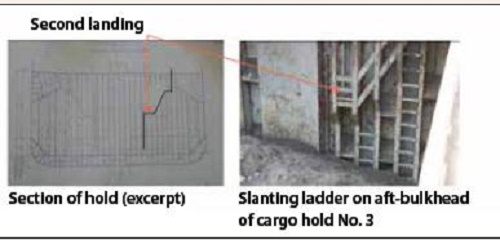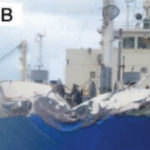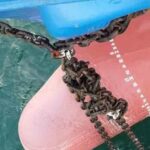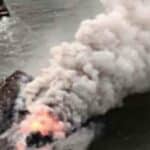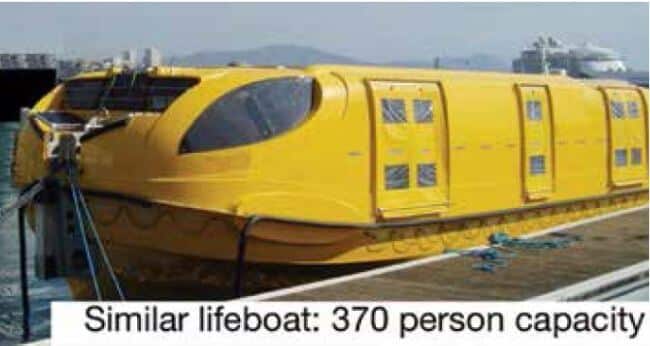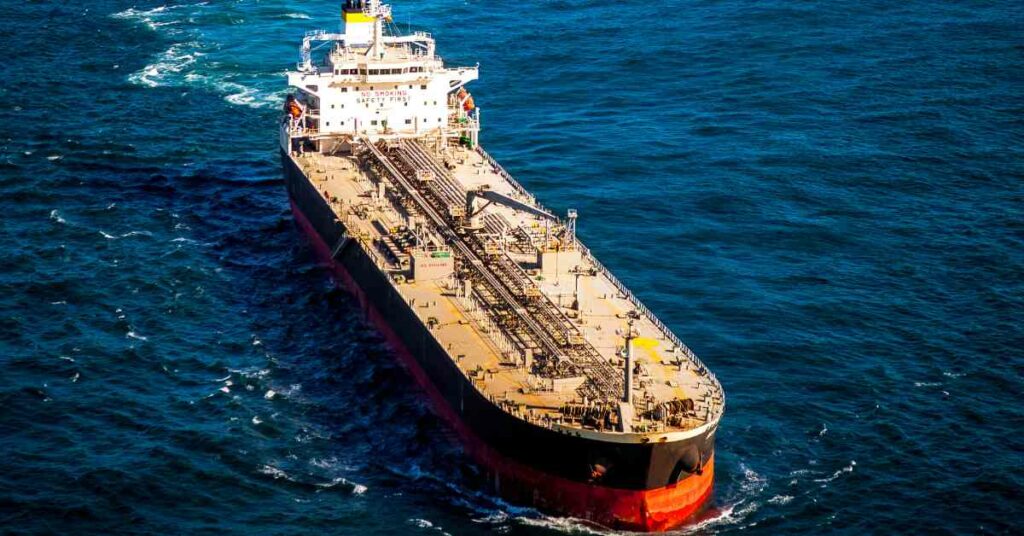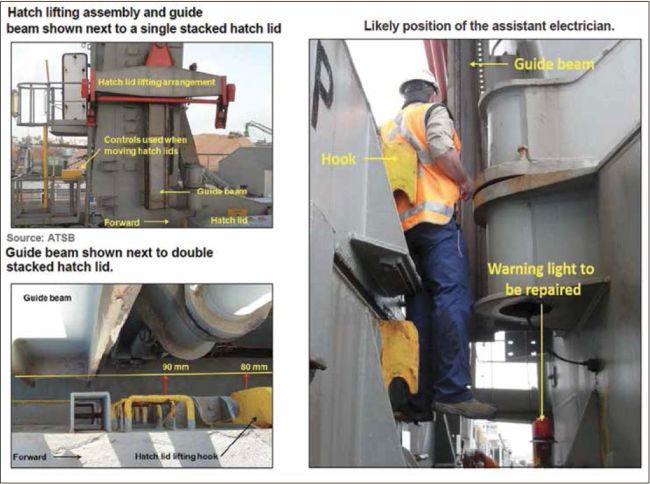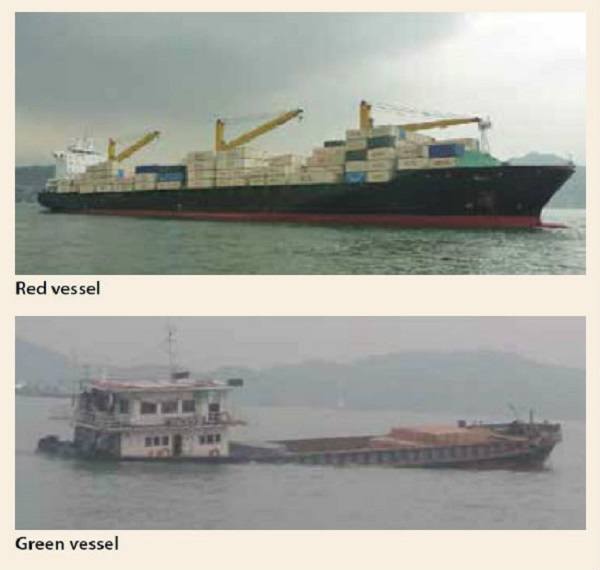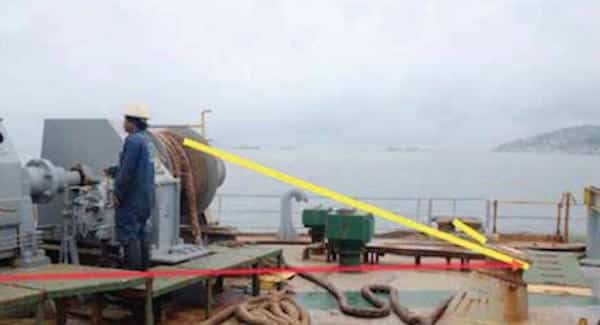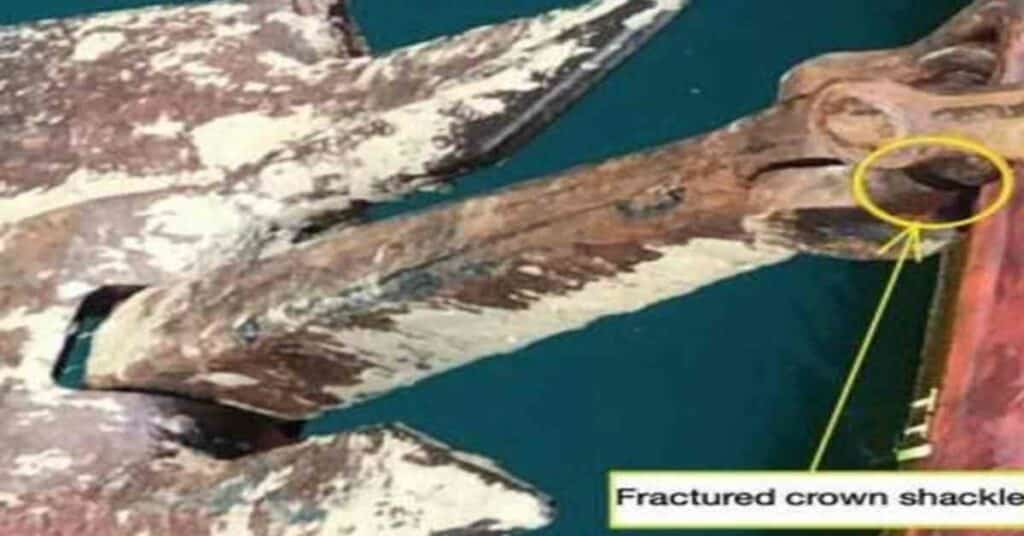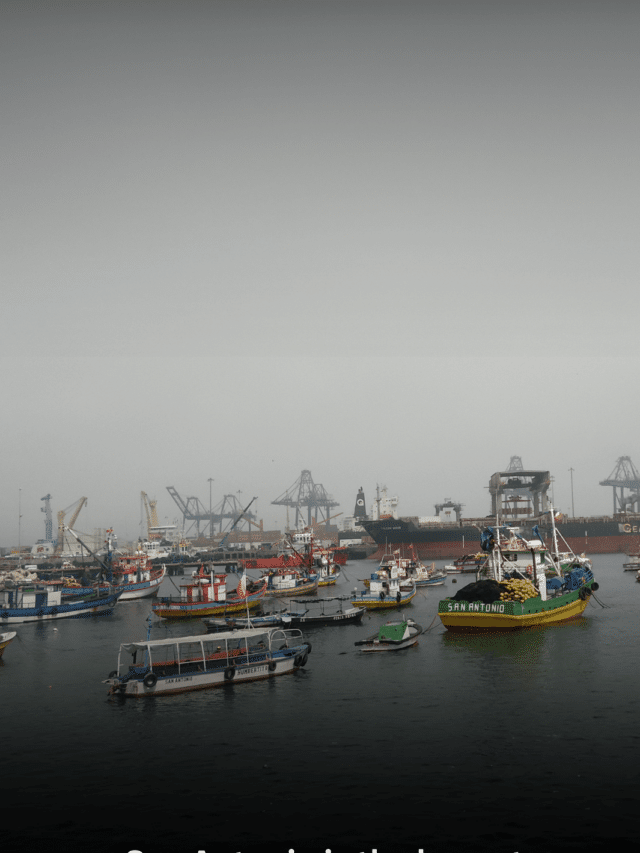Real Life Accident: Copper Sulphide Concentrate Depletes Oxygen – Three Die in Cargo Hold
A cargo ship was to discharge a cargo of copper sulphide concentrate and hatch covers of cargo holds No. 1 and No. 3 were opened to that end. Before discharge operations began, the stevedores had a safety meeting and discussed the unloading procedure. It was to be as follows:
1 Foreman has crew of the ship open hatch covers.
2 Foreman measures oxygen concentration in the holds.
3 Foreman opens entrance hatches of holds to be discharged and closes other hatches.
4 Foreman sets notice boards on entrance hatch.
5 The ship’s crane hoists the backhoe and carries it into hold.
6 Backhoe gathers cargo (copper concentrates) in the centre of hold.
7 Grab bucket of the on-shore crane grabs cargo and drops it into hopper.
8 Discharge the remaining cargo that the grab bucket cannot grab and collect using scoops and brooms.
Oxygen content was apparently measured at various points in both holds and found to be normal (20.9%). The driver of the backhoe for hold No. 3 entered the hold via an access hatch and went down a straight ladder (about 2.5m length), across a landing, and another slanting ladder (about 4m vertical). When he moved to the second landing, he fell feet-first, landed on his behind, and remained motionless. The crane operator who witnessed the fall put the backhoe down on the cargo pile and raised the alarm. He then got off the crane and ran to the entrance hatch of cargo hold No. 3.
Two stevedores entered the cargo hold through the entrance hatch leaving the self-contained breathing apparatus (SCBA) on the upper deck.
Because they entered the cargo hold without SCBA, another stevedore followed them to prevent them from going down. When the third man had climbed halfway down the slanting ladder he felt breathless and one of the men in the hold signalled him to go back. He exited the hold, as did the man that signalled, but the third man had collapsed.
While the two men that had just exited the hold were catching their breath, crew of the ship provided them with gas masks. The canister attached to the gas mask indicated ‘Inorganic gases and vapours’. One stevedore, equipped with a gas mask and carrying the SCBA, headed for the hatch of cargo hold No. 3. The chief officer advised the stevedores that they should use the SCBA gear and that going into the hold with only gas masks is dangerous. Nonetheless, a stevedore equipped with the gas mask and carrying the SCBA on his back entered cargo hold No. 3 through the hatch again. At the time, the other stevedore could not understand the chief officer’s advice (spoken in English). He thought the mask might be an oxygen supply mask and as such, he too went into the hold with only the mask. When he climbed halfway down the slanting ladder he felt breathless and when he arrived at the second landing he felt faint. He turned back to the upper deck and used all his strength to crawl up the ladder. When he arrived near the hatch, the ship’s crew rescued him by pulling him up to upper deck by his arms. The other stevedore began to climb up the final ladder but fell into the hold after climbing one or two rungs. Now there were three casualties in the hold and rescue efforts to remove them would take time – too much time to save them.
The subsequent report found that oxygen in cargo hold No. 3 was consumed by the copper concentrate through oxidation. Some of the other findings of the report related to oxygen testing practices by the stevedore company were as follows:
1 Measurement locations were not standardised and often O2 concentration at the entrance hatch was not measured.
2 If the measured O2 concentration was less than 20.9%, measuring continued until it returned to 20.9%, hence it is not strange that all values in the record book were 20.9%.
3 If an entrance permitted notice board was exhibited on entrance hatch, stevedores entered the cargo hold even without permission of the cargo work supervisor.
4 The person measuring the O2 concentration did not inform the stevedores of the O2 concentration; the stevedores entered the cargo hold relying on the smell of the cargo and the entrance permitted notice board being displayed.
5 Usually, a stevedore was not very aware of the O2 concentration, but trusted the smell of the hold and his intuition.
Reference & Image Credits: nautinst
Do you have info to share with us ? Suggest a correction
- Real Life Incident: Vessel Collision in Good Visibility
- Real Life Incident: Severe Injury To Deck Crew While Leaving Berth
- Real Life Incident: Departure Damage in Very Restricted Waterway
- Real Life Incident: Low Situational Awareness Has High Impact Consequence
- Real Life Incident: Fouled Anchor in a Designated Anchorage
- Real Life Incident: Fire On Barge Carrying Scrap Metal Causes $7 Million Worth Of Damage
Latest Case studies Articles You Would Like:
Subscribe To Our Newsletters
By subscribing, you agree to our Privacy Policy and may receive occasional deal communications; you can unsubscribe anytime.
Web Stories



